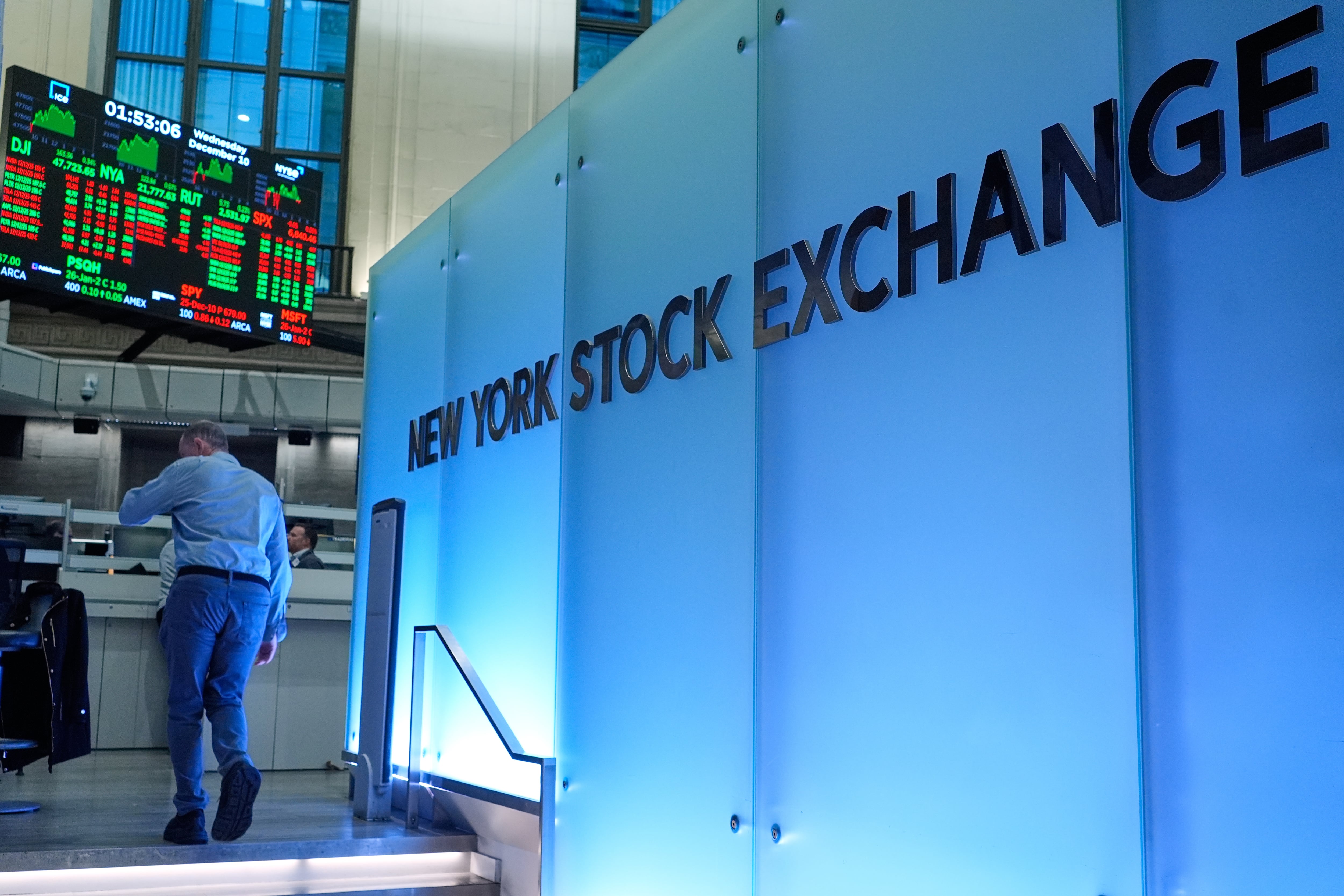NEW YORK (AP) — After a manic week that began with Japanese stocks falling to their worst loss since 1987′s Black Monday, only for U.S. stocks to soar later to their best day since 2022, slight gains on Friday carried Wall Street almost exactly back to where it began the week.
The S&P 500 rose 0.5% to shave what had been a brutal loss for the week down to a barely registerable 0.04%. The Dow Jones Industrial Average added 51 points, or 0.1%, and the Nasdaq composite climbed 0.5%.
The gains pulled the S&P 500 back within 5.7% of its all-time high set last month, after it had sunk nearly 10% below that record during the week. It was a vicious return of volatility for a market that had been rising smoothly, and a measure of fear on Wall Street briefly surged toward its highest level since the 2020 COVID crash. It also may not be over. Worries are still high about the strength of the U.S. economy, and reports are due next week on inflation, sales at retailers and other measures of strength.
But on Friday, at least, the mood was one of calm after more big U.S. companies joined the pile reporting better profit for the spring than analysts expected.
Expedia Group jumped 10.2% after delivering stronger results than forecast, though it saw a softening of demand in July like some other companies. Take-Two Interactive rose 4.4% after the company behind the Grand Theft Auto and NBA 2K video games likewise reported better results than expected.
Earlier in the day, indexes rose for many other stock markets worldwide. They've also been frenetic since last week because of a number of factors slamming together at once. At the forefront is the value of the Japanese yen, whose sudden and sharp strengthening recently forced hedge funds and other traders to scramble out of a popular trade en masse.
They had been borrowing Japanese yen at very low cost and then investing it elsewhere around the world. But a hike to interest rates by the Bank of Japan forced many to abandon the trade at the same time and sent global markets reeling. A promise by a top Bank of Japan official in the middle of the week not to raise rates further as long as markets are “unstable” helped stabilize the yen.
Also weighing on the market have been worries about the slowing U.S. economy. A raft of weaker-than-expected reports forced questions about whether the Federal Reserve has kept interest rates at too high of an economy-crunching level for too long in order to beat inflation. A report last Friday showing much weaker hiring by U.S. employers than expected was the lowlight.
Such worries dragged Treasury yields lower in the bond market, and they fell again Friday. Yields sank as investors looked for safer places for their money and as expectations built for deeper cuts to rates coming from the Fed. The yield on the 10-year Treasury fell to 3.94% from 3.99% late Thursday.
After seemingly getting the Bank of Japan to stop hiking rates for now, Wall Street’s goal “now appears to be bossing the Fed into big rate cuts,” Bank of America strategist Michael Hartnett said in a BofA Global Research report.
Reports next week could drive more swings for the market. On Thursday will come an update on how much shoppers are spending at U.S. retailers. Households at the lower end of the income spectrum have been struggling for a while to keep up with still-rising prices, but economists expect the report to show a return to growth after a stall in retail spending during June.
Another report on Thursday will show how many U.S. workers are applying for unemployment benefits. The most recent such report raised hopes for the economy after the prior week’s frightened investors.
Looming over them all will be the latest updates on inflation. A worst-case scenario would be if Tuesday’s and Wednesday’s inflation reports show higher-than-expected rises in prices at the wholesale and consumer levels, while the week’s other reports show a sharp weakening of the economy.
The Federal Reserve wouldn't have an easy way to fix such a toxic mess. The central bank could lower interest rates, which would give the U.S. economy an upward push but also threaten to worsen inflation. Or it could continue to keep its main interest rate at a two-decade high. That would put downward pressure on inflation but also inflict more pain on the economy.
To be sure, even though the U.S. economy is slowing, it is not in a recession. And many economists still see one as unlikely.
A third factor that sent markets spinning recently is increased skepticism about Wall Street’s rush into artificial-intelligence technology, and how much profit growth it will really produce.
The frenzy around AI allowed a handful of Big Tech stocks to drive the S&P 500 to dozens of all-time highs this year, even as high rates weighed on other areas of the market. But the group of stocks known as the “Magnificent Seven” lost momentum last month amid criticism investors got carried away and took their prices too high.
All of the Magnificent Seven rose Friday except for Nvidia, which slipped 0.2%.
All told, the S&P 500 rose 24.85 points to 5,344.16. The Dow gained 51.05 to 39,497.54, and the Nasdaq climbed 85.28 to 16,745.30.
___
AP Business Writer Matt Ott contributed.









